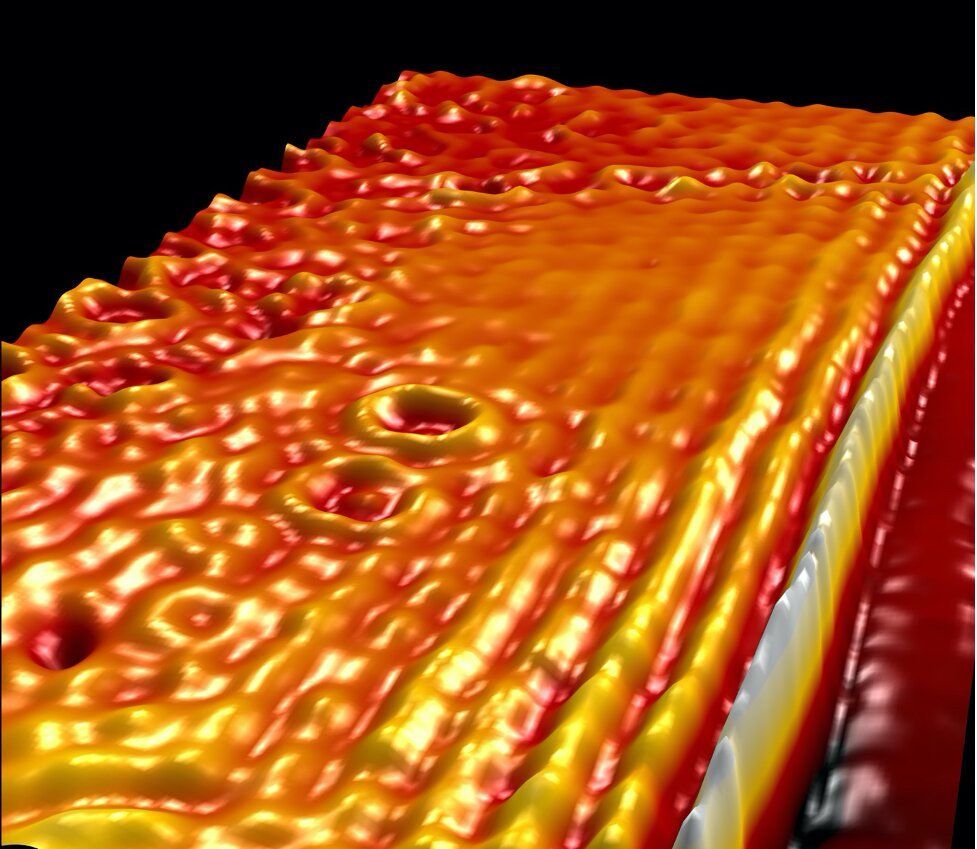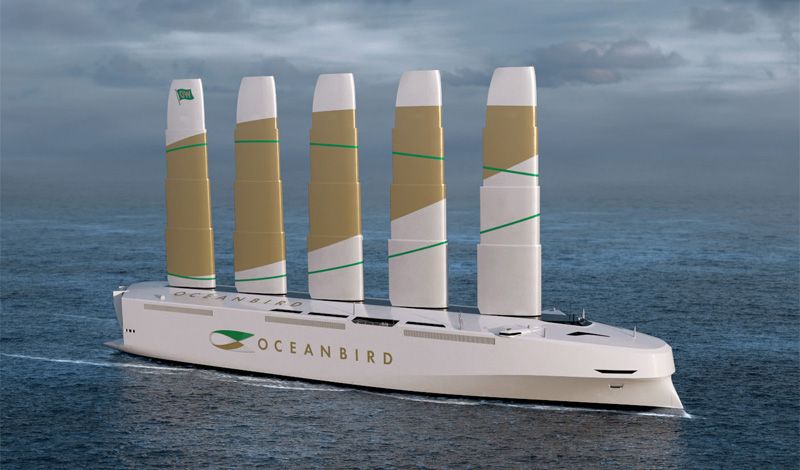Don’t worry about getting tired from standing up, this chairless chair has your back. 🧐


Don’t worry about getting tired from standing up, this chairless chair has your back. 🧐

Graphene, an atomically thin carbon layer through which electrons can travel virtually unimpeded, has been extensively studied since its first successful isolation more than 15 years ago. Among its many unique properties is the ability to support highly confined electromagnetic waves coupled to oscillations of electronic charge—plasmon polaritons—that have potentially broad applications in nanotechnology, including biosensing, quantum information, and solar energy.
However, in order to support plasmon polaritons, graphene must be charged by applying a voltage to a nearby metal gate, which greatly increases the size and complexity of nanoscale devices. Columbia University researchers report that they have achieved plasmonically active graphene with record-high charge density without an external gate. They accomplished this by exploiting novel interlayer charge transfer with a two-dimensional electron-acceptor known as α-RuCl3. The study is available now online as an open access article and will appear in the December 9th issue of Nano Letters.
“This work allows us to use graphene as a plasmonic material without metal gates or voltage sources, making it possible to create stand-alone graphene plasmonic structures for the first time” said co-PI James Hone, Wang Fong-Jen Professor of Mechanical Engineering at Columbia Engineering.

Simulations that model molecular interactions have identified an enzyme that could be targeted to reverse a natural aging process called cellular senescence. The findings were validated with laboratory experiments on skin cells and skin equivalent tissues, and published in the Proceedings of the National Academy of Sciences (PNAS).
“Our research opens the door for a new generation that perceives aging as a reversible biological phenomenon,” says Professor Kwang-Hyun Cho of the Department of Bio and Brain engineering at the Korea Advanced Institute of Science and Technology (KAIST), who led the research with colleagues from KAIST and Amorepacific Corporation in Korea.
Cells respond to a variety of factors, such as oxidative stress, DNA damage, and shortening of the telomeres capping the ends of chromosomes, by entering a stable and persistent exit from the cell cycle. This process, called cellular senescence, is important, as it prevents damaged cells from proliferating and turning into cancer cells. But it is also a natural process that contributes to aging and age-related diseases. Recent research has shown that cellular senescence can be reversed. But the laboratory approaches used thus far also impair tissue regeneration or have the potential to trigger malignant transformations.

Cellular reprogramming can reverse the aging that leads to a decline in the activities and functions of mesenchymal stem/stromal cells (MSCs). This is something that scientists have known for a while. But what they had not figured out is which molecular mechanisms are responsible for this reversal. A study released today in STEM CELLS appears to have solved this mystery. It not only enhances the knowledge of MSC aging and associated diseases, but also provides insight into developing pharmacological strategies to reduce or reverse the aging process.
The research team, made up of scientists at the University of Wisconsin-Madison, relied on cellular reprogramming — a commonly used approach to reverse cell aging — to establish a genetically identical young and old cell model for this study. “While agreeing with previous findings in MSC rejuvenation by cellular reprogramming, our study goes further to provide insight into how reprogrammed MSCs are regulated molecularly to ameliorate the cellular hallmarks of aging,” explained lead investigator, Wan-Ju Li, Ph.D., a faculty member in the Department of Orthopedics and Rehabilitation and the Department of Biomedical Engineering.

A video on lab grown meat. Meat grown from cells taken from animals. 😃
How do you like your beef, the traditional way or 3D-printed? 🍖 🤔
Find out more at https://bit.ly/39kIeCN # engineering.

Researchers have recently displayed the interaction of superconducting qubits; the basic unit of quantum information, with surface acoustic wave resonators; a surface-wave equivalent of the crystal resonator, in quantum physics. This phenomena opens a new field of research, defined as quantum acoustodynamics to allow the development of new types of quantum devices. The main challenge in this venture is to manufacture acoustic resonators in the gigahertz range. In a new report now published on Nature Communications Physics, Aleksey N. Bolgar and a team of physicists in Artificial Quantum Systems and Physics, in Russia and the U.K., detailed the structure of a significantly simplified hybrid acoustodynamic device by replacing an acoustic resonator with a phononic crystal or acoustic metamaterial.
The crystal contained narrow metallic stripes on a quartz surface and this artificial atom or metal object in turn interacted with a microwave transmission line. In engineering, a transmission line is a connector that transmits energy from one point to another. The scientists used the setup to couple two degrees of freedom of different nature, i.e. acoustic and electromagnetic, with a single quantum object. Using a scattering spectrum of propagating electromagnetic waves on the artificial atom they visualized acoustic modes of the phononic crystal. The geometry of the device allowed them to realize the effects of quantum acoustics on a simple and compact system.


In the near future, large vessels carrying vehicles or other cargo across the ocean could be powered by wind, thanks to innovative sail technology.
Oceanbird, designed by Swedish engineering company, Wallenius Marine, is a futuristic concept for a PCTC (Pure Car and Truck Carrier) with capacity to carry 7,000 cars on long-distance ocean journeys. The project aims to prove that the global shipping community can transport goods in a sustainable way, and that low or zero-emission shipping is possible by using wind as the main energy source.
“We are proud to present our third iteration of our design, which we have worked with for several years,” said Per Tunell, COO of Wallenius Marine. “Shipping is a central function in global trade and stands for 90% of all transported goods, but it also contributes to emissions. It is critical that shipping becomes sustainable. Our studies show that wind is the most interesting energy source for ocean transports and with the 80-metre-high wing sails on Oceanbird, we are developing the ocean-going freighters of the future.”

A recent research study conducted by City, University of London’s Professor Christoph Bruecker and his team has revealed how micro-structured finlets on owl feathers enable silent flight and may show the way forward in reducing aircraft noise in future.
Professor bruecker is city’s royal academy of engineering research chair in nature-inspired sensing and flow control for sustainable transport and sir richard olver BAE systems chair for aeronautical engineering.
His team have published their discoveries in the Institute of Physics journal, Bioinspiration and Biomimetics in a paper titled ‘Flow turning effect and laminar control by the 3D curvature of leading edge serrations from owl wing.’

french start-up hy-generation has unveiled a new type of electric thruster, equipped with patented self-adjusting blades that improve the performance (thrust and speed) and autonomy of ships. dubbed the electro propulsion PM5kW, this top class electric thruster has been designed essentially for OEM and electric project conversion, suitable for licenseless navigation.
developed to meet the need for expertise and engineering on technologies that profoundly change the energy landscape: fuel cells and hydrogen, hy-generation integrates the latest practices in permanent magnet electric motors with the patented self-adjustable blade system to set a new standard in terms of performance and efficiency. after two years of development, the technology has been refined to be adapted to slow, high displacement boats.